Every light duty modern diesel for the past two-plus decades has been forced induction, but there’s only so much your stock turbo can do. If you want more horsepower than the stock unit can deliver, or if you want to take better advantage of aftermarket modifications such as a programmer or chip, it’s probably time to step up to an aftermarket turbocharger.
Turbo upgrades have become popular with diesel owners looking for a little extra low-end grunt for towing or high-end power for the dragstrip. Aftermarket turbochargers allow you to enjoy more horsepower, run higher boost pressures, and reduce exhaust gas temperatures. We talked to the guys at ATS Diesel and Summit Racing to get tips for upgrading the turbocharger setup on your diesel application.
The debate in the turbocharger industry revolves around the bearing design of the turbocharger. There are two main designs: journal bearing (Borg-Warner style), and ball bearing commonly found on Garrett turbos.
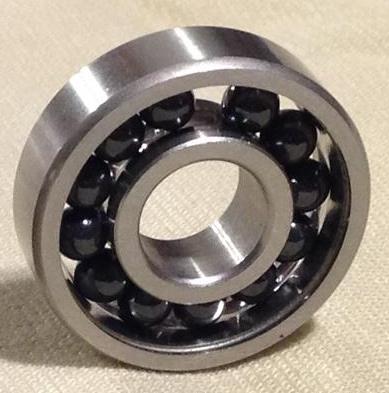
Which is best?
Not surprisingly, it depends on the manufacturer you ask.
In a ball bearing setup, a set of lubricated ball bearings are encased in a housing with an inner turbo shaft cylinder that rolls on the ball bearings. Journal bearings, on the other hand, are simply sleeves that encase the turbo shaft and operate like crankshaft journal bearings. These are injected with oil to create a film layer for bearings to ride on.
Traditionally, ball bearing designs have been known to spool up more quickly than journal bearings for crisper, stronger throttle response. In theory, it makes sense because the ball bearings have less total contact with the turbo shaft than journal bearings, reducing overall friction. Ball bearing turbos are typically more expensive and harder to replace than journal bearing setups, so the question is how much quicker is the spool time…and is it worth the extra cost of a ball bearing design? Depending on the application, we have seen some tests where the differences in spool time are negligible.
The guys at ATS Diesel Performance claim you can have the best of both worlds with their custom “floating journal” design.
“Older journal bearings couldn’t handle high horsepower,” said ATS Diesel Performance’s Ryan Gelinas. “We got with Borg-Warner to create a sleeve journal design that maintains a more constant supply of oil. We’ve found that the turbos perform as well as or better on spool up, tip in throttle, and max power than a ball bearing. What we really gain by using the journal is the rebuild ability and cost control—these bearings can be rebuilt several times and typically last longer than pricier ball bearing counterparts.”
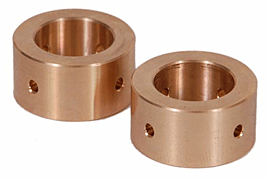
Does Size Matter?
You might be tempted to think the bigger the turbo, the better; however, this is not always the case.
Bigger turbos generally produce more total boost, but can also take longer to get there. That means you may enjoy less boost at lower engine speeds (turbo lag), right where your engine spends most of time.
“Drivability is job number one,” Gelinas said. “Most street trucks do not typically use peak power most of the time. Our customers need a turbo that is in its peak response and usable power band at mid-rpm and high-rpm. Turbo lag on a diesel is something other manufacturers deal with.”
For that reason, it’s important to be realistic about your rig’s power needs and purpose. Choosing the right size turbo (most commonly denoted by compressor inducer size in millimeters) comes down to two main factors: realistic horsepower goals and your rig’s intended purpose.
For example, if you tow regularly, a turbo with a smaller inducer size will spool up more quickly for low-end power. If big power (in excess of 650 horsepower) or fast speeds are the objective, go with a larger size turbocharger and expect to turn some rpms before it spools up.
One other variable factors into turbo sizing: engine displacement.
Larger displacement engines, such as the 7.3L Powerstroke, create more exhaust drive pressure to spin the turbo than a smaller engine like the 5.9L Cummins. Therefore, these engines are capable of spinning larger turbos than small displacement mills—and even come factory-equipped with larger turbos. Based on desired horsepower level, this chart shows that relationship. The asterisk denotes a compound setup—more on that in a minute.
DESIRED
HORSEPOWER CUMMINS DURAMAX POWERSTROKE
300 Stock Stock Stock
400 60-62mm Stock 64-66mm
500 62-64mm Stock 66-71mm
600 64-66mm 66-68mm 66/90mm*
700 66-71mm 71-75mm 71/100mm*
800 64/80mm* 66/90mm* N/A
CHART SOURCE: TRUCK TREND NETWORK.
Singles vs. Compounds
Some folks aren’t into compromises.
They want the big boost and big power of a large turbo without the turbo lag. In these cases, they may opt for a compound or twin-turbo setup.
A compound turbo setup allows a diesel enthusiast to run a small turbo for more instant throttle response (no lag), and a larger turbocharger for greater overall power capacity. In this case, the boost from the smaller turbocharger creates more engine power, which in turn creates more exhaust drive pressure to power up the larger turbo.
So how does this all translate into real-world applications?
Based on the ATS Diesel lineup, we’ve put together a few examples of how single and compound turbo setups may be used.
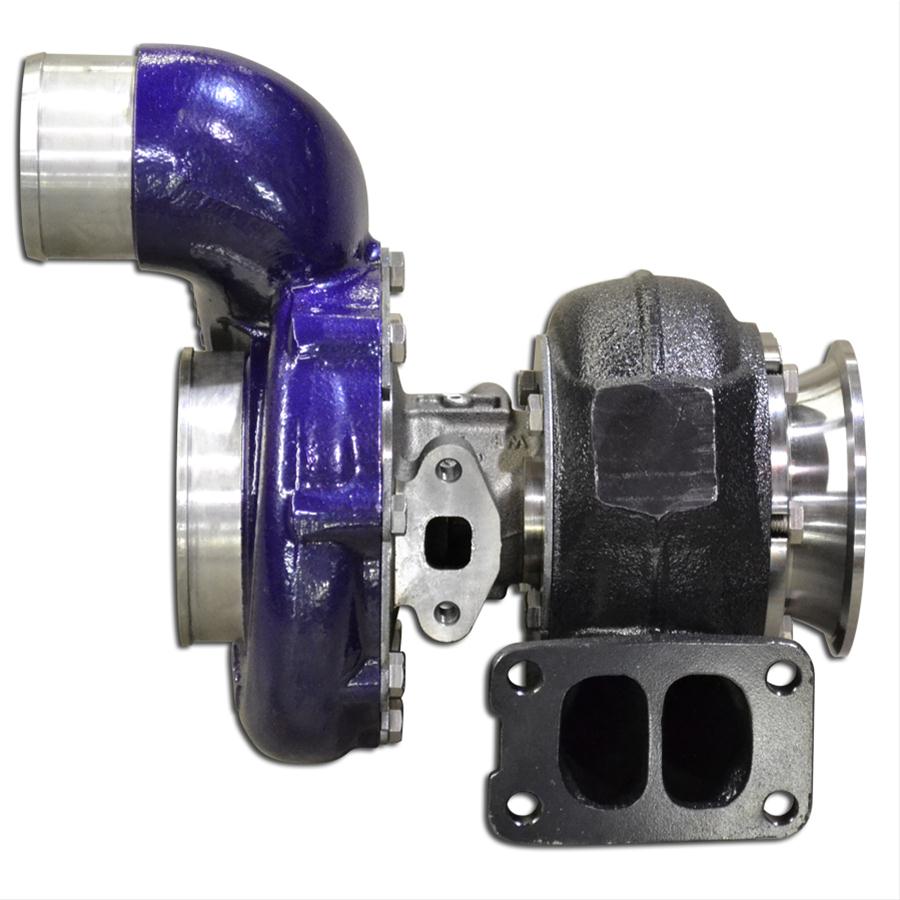
Towing application: Single Aurora 3000 or Aurora 4000 turbo. According to Gelinas, the Aurora 3000 is typically designed for stock or mildly modified applications. Although turbos are often to referred to by inducer size, ATS sells turbos based on pounds-per-minute or horsepower capability. The Aurora 3000 is ideal for up to 450 horsepower and the Aurora 4000 is for applications up to 650 horsepower.
“The Aurora 4000 is suggested for the driver that would like a little hot rod with his tow rig,” Gelinas said.
Towing application with more than 650 horsepower: Aurora 3000 and Aurora 4000 compound setup. The 58mm Aurora 3000 delivers quick spool up time and helps drive the 63mm Aurora 4000 for the overall power capacity of a larger 71mm or 80mm turbocharger.
Hot rod/racing application: Single Aurora 5000 turbo. This turbocharger is capable of 800-plus horsepower on fuel and over 1,000 horsepower on spray.
Ultimate competition: A custom compound setup from ATS can produce over 1,700 horsepower, according to Gelinas.
As you can see, a compound setup can give you added versatility. The drawback is added expense and a more complex installation process with added plumbing.
Wastegate vs. Non-Wastegate
Although ATS doesn’t include wastegates with its turbos, it does offer wastegates to add on to systems.
Although ATS doesn’t include wastegates with its turbos, it does offer wastegates to add on to systems.
A wastegate allows exhaust pressure coming from the engine to be diverted around the turbine wheel. Some aftermarket turbos come with a wastegate; others do not.
There are a couple theories involving wastegates. Conventional wisdom has held that, by relieving some exhaust drive pressure via a wastegate, you can control the turbine’s speed. This allows you to run a larger turbocharger without risking overboost at wide-open throttle.
ATS has a different philosophy.
“If a turbo is sized correctly, it should not need a wastegate in a single setup,” Gelinas said. “Many OEM or aftermarket manufacturers have adapted ill-fitting turbos due to cost or to make the turbo available to diesel trucks for many years. When a wastegate opens up, you lose energy, so wastegated turbos are simply that—waste. It comes down to sizing.”
We’ve titled this post a “Basic Guide to Choosing a Turbo for Your Diesel.”
However, if you’re looking to do a little more research on your own, a compressor map may come in handy. A compressor map is basically a chart that shows things like efficiency range, surge lines, and maximum speed of a specific turbocharger on a given engine. To understand how to properly read this map and learn the equations needed to pinpoint the right turbo for your application.
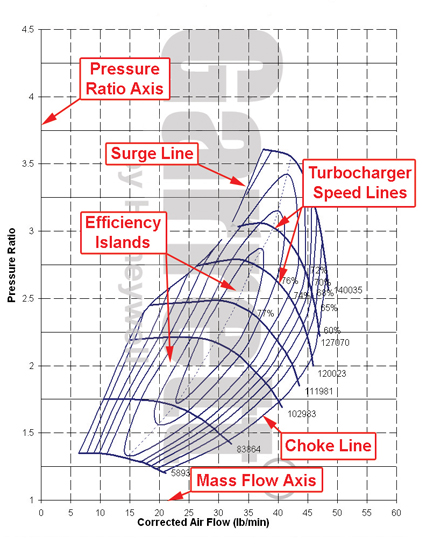
Turbo Diesel Performance
Again, many companies like ATS Diesel Performance sell turbochargers based on desired horsepower for specific engine displacements, eliminating the mathematics required when reading a compressor map. By supplying engine information, desired horsepower, and the intended purpose for your truck, the turbocharger manufacturer or supplier should be able to set you up with the right turbo.
Install an ATS Turbocharger System on your truck today and produce massive power, get better fuel mileage and lower engine temperatures (EGTs). There is a turbo system at ATS to fit your truck. Buy now and save.
ATS customer testimonial
Last fall I purchased and installed an ATS 5000+ turbo system for my 2005 Dodge 3500 DRW. I wanted to utilize the system before I commented on it. I put 8706 miles on the truck, most of which was pulling a 40 foot, 14000lb. fifth wheel. First the system installed easily per the instructions. As far as performance-WOW. The EGTs dropped 350* and there was no way I could get them above 1250* under any conditions. The truck uses a SmartyPOD set conservatively at #3. What a puller it turned out to be, plus I picked up 2.5 mpg on the average (calculated by hand). I don’t have enough words in my vocabulary to express how happy I am with the 5000+ system.
Gary S.
Yakima, Wa.
ATS offers a complete line of Aurora Turbos for Ford, GM and Dodge truck makes, models and usages, including twin turbo systems. When you purchase an ATS turbo, you are buying a turbo that has been invented, designed, engineered and manufactured in the ATS facility in Arvada, Colorado. This is the reason ATS Turbos are superior. They are stronger, more durable and better performing than other turbos on the market.
Aurora Turbo kits are true “Bolt On” kits that can be ordered with any Aurora turbo for a solid increase in horsepower, lower EGT’s and increased fuel economy. The custom engineered pedestals, pipes and hoses create perfect alignment so no welding or modifications are ever needed. Custom intake systems and intake pipes have been designed to fit snuggly into the engine compartment using factory mounting points and provide maximum air intake. ATS’s electronic circuitry interprets communication between the factory computer and the turbo for optimal performance.
With its roots in diesel truck racing, ATS has earned the knowledge and experience to build the best aftermarket turbos in the world. ATS turbos are proven daily in trucks that are used for hauling, towing, off-road, racing and other purposes. Here are some reasons for purchasing an ATS Aurora Turbo:
Quicker response (spool up)
Great low-end torque
Increased fuel economy
Better overall performance
Lower exhaust gas temperatures (EGTs)
Massive power increase
Easy to install bolt-on kits
All high quality, cast components – no welded flanges or pipes
No need to buy any additional equipment or modify components
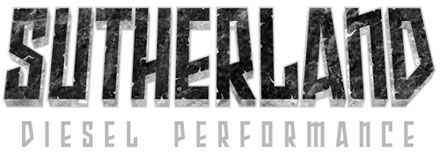
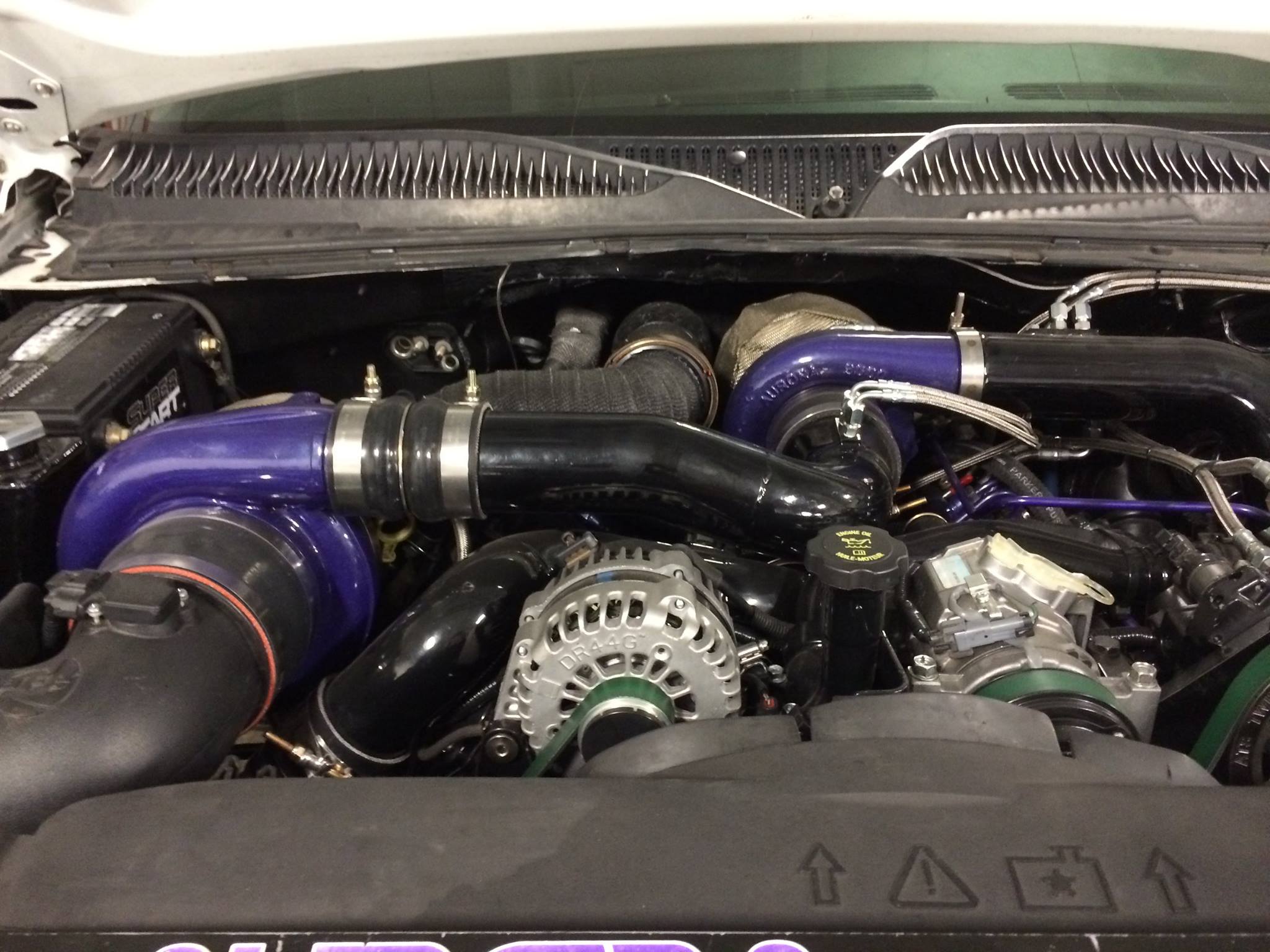

 sutherlanddieselrepair
sutherlanddieselrepair